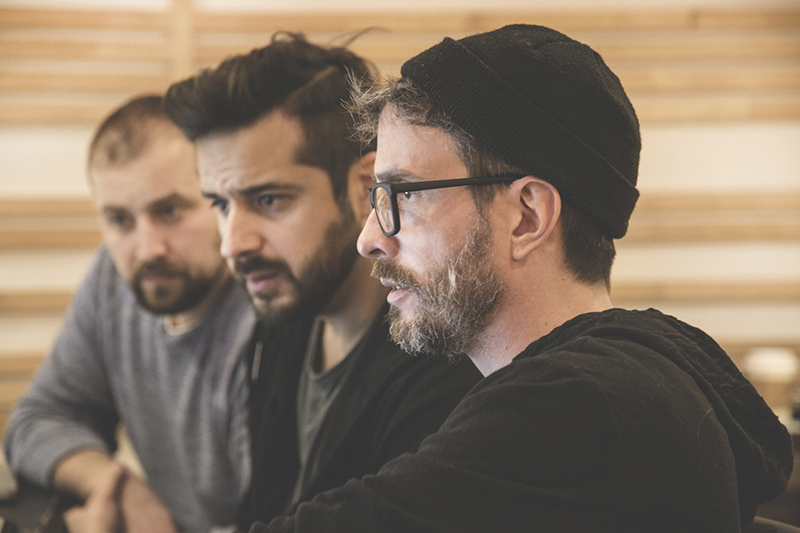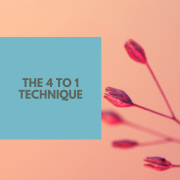Applying Da Vinci Principles to Music Coaching
As you already know (well I hope, at this point), one of my speciality is to work with young or veteran music producers and remove struggles so they can create freely. Recently I’ve been studying how Leonardo Da Vinci was learning and creating, so I saw a crossover to what I do. After all, each song we make is basically a creation in itself, an innovation and a prototype for future project of ours. If it’s not already, I invite you right away to think of each song you make as a step taken in a direction that will lead you to greater things.
Leonardo da Vinci, mastered the art of innovation and interdisciplinary thinking, modern musicians and producers can draw inspiration from his principles to unlock their potential in the realm of music production. In this blog post, we will delve into each of the seven principles from the book “How to Think Like Leonardo da Vinci” and explore how they can be skillfully applied to music production, enabling you to become a true maestro in your craft. If you’re seeking to enhance your music coaching journey, embrace these principles as guiding stars to navigate the musical cosmos.
Curiosità – Embrace Musical Diversity
Leonardo da Vinci’s insatiable curiosity fueled his passion for knowledge and exploration. As a musician and producer, nurturing curiosità involves delving into various musical genres, styles, and cultures. Too often, as a producer, we get obsessed by a genre, a song, an artist and we focus on it for a while, forgetting anything else. Sometimes, the answers to our questions and inspiration pitfalls come from another unexpected source.
Break free from creative boundaries and venture into new territories to experiment with new sounds and musical elements. Diving in genres you dislike, switching to past eras of time, exploring the roots of another country are good places to look into. Drum and Bass took loops from funk. Hip hop samples jazz, while dub techno is inspired by reggae, which has roots in old African music. All genres taps into another culture and this means you can softly break rules by doing the same, whatever genre you’re doing.
TIP for inspiration: Find a genre to explore, pick any song and isolate an instrumental moment where you can hear the main melody then convert it to midi in Ableton.
Attend music festivals, workshops, pay attention to street artists and listen to a wide array of musicians from different backgrounds. Learn who inspired your heroes such as Villalobos’ love for Keith Jarrett. This diverse exposure will not only enrich your musical palette but also infuse your productions with unique flavours.
Dimostrazione – Hands-on Learning and Experimentation
Da Vinci’s approach to learning through practical experience resonates with music production. Aspiring producers should engage in hands-on experimentation with different instruments, digital audio workstations (DAWs), and audio effects. There is different projects one can do such as DIY reverb units, foley ideas or simply recording percussion out of anything at home.
A fact that I share to clients all the time: practice, practice, practice and make mistakes.
Practice creating diverse arrangements, experiment with modulation and synthesis, and explore various mixing techniques. By consistently practicing dimostrazione, you’ll build a deeper understanding of music production that theory alone can never provide.
TIP: I am curating a Youtube list of experiments you can try. That list is growing everyday and is filled with ideas to try.
Sensazione – Developing a Keen Ear and sharp vision
Sensazione refers to the sharpening of one’s senses, and for a musician, this means cultivating a keen ear for music. Train yourself to listen actively to various musical compositions, both old and new. Pay attention to the nuances of melodies, harmonies, rhythm patterns, and the subtle production details that make each piece unique. Regularly practicing ear training exercises will help you identify and appreciate intricate musical elements, allowing you to apply them creatively in your own productions.
TIP: Write some few notes and test all music scales to see how it sounds for you. Try all different chords as well. Spending time to know them will help later to understand melodies.
While we know music is about the hearing and that ear training is important, I also encourage to train your eyes as well. One thing I disliked when I used to work in a music school was that all teachers were telling students to only rely on their ears and from what I was seeing, that tip was frustrating for them. This is why I tell people to first learn to trust your eyes when you use sound analyzers and then train your ears to make the link with what you see.
As we work with visual tools such as a DAW, training yourself to know what happens when you click here and there or where to find your tools comes with practice but the visual organization is essential for speed. The faster you are with your tools, the more you’ll be in the flow when you think of an idea and want to execute it. This speed and understanding can only happen with practice… yes, once more and now you know it. I notice that even for myself, if I skip a few days of not practicing, I forget some ideas I have.
One thing I invite you to do is to learn and practice critical listening. That skill is extremely important for whatever you want to achieve and you’ll thank me later.
Sfumato – Embracing Musical Ambiguity
In the realm of music production, Sfumato encourages you to embrace ambiguity and uncertainty. This is where many producers struggle but also, the average listener. In the psychology of music listening, people can be on various modes. One is about listening to a song to reconnect with the mood, emotion, idea because of the emotional craving of having the song inducing that. An other is about discovering something new. Even when someone is open to listening to something new, they’ll have a bunch of personal filters that will make them decide if they like it or not: sounds used, tones, density, speed, scale, etc. If you come with expectations, you’ll most likely be not enjoying it.
Understanding that your listener has it’s own personal story once they listen to your creation will help you understand how you want them to hear it. Finding the right balance of ambiguity is the key to educate your listeners to be able to deal with more.
Music is an art form where unexpected twists and creative risks often lead to remarkable breakthroughs. Allow yourself to explore unconventional chord progressions, atypical song structures, and unorthodox sound combinations. Question what others tell you that you can’t do. Of course, some technicalities are essentials but if it’s purely arbitrary and personal tastes, it might be worth exploring the why behind anyone’s discomfort. Embracing the uncertainty will open doors to uncharted musical territories and give your productions a distinct, avant-garde charm.
But uncertainty is also the path of the musician. We don’t know if people will like our music, we don’t know if what we do will be understood, what kind of reaction it will bring us and ultimately, open or slow down our ascension as an artist. To develop ambiguity endurance is a good investment.
TIP: Consider that there are so many songs that have technical imperfections that eventually became seen as a risk, that they set the path to new standards. Accepting ambiguity means to accept imperfection, which is hard for perfectionists.
Arte/Scienza – Balancing Artistic Vision with Technical Expertise
Leonardo da Vinci famously harmonized art and science, a practice that resonates with music production, especially in electronic music. I firmly believe if he was around, he’d certainly be interested in how electronics can mimic sounds. Balancing your artistic vision with technical expertise is essential for achieving a polished and professional sound. While artistic expression fuels creativity, understanding the technical aspects of audio engineering, mastering, and sound design empowers you to bring your musical ideas to life with precision and finesse.
Some classes, courses and technical knowledge you could look into that would be beneficial could:
- Studying computer science. I often say that if you’re computer challenged, it will be a hurdle to make electronic music for all the technology needs behind it. Studying how your computer works, hard drive, files management, hardware optimisation and also, coding, will definitely help in one way or another, especially if you have to troubleshoot.
- Signal flow. Understanding the basics of sound with phase, polarity but also basics as what is loudness, how speakers/monitors work will help. You don’t need to study engineering in itself. But if there’s one concept I find essential, it’s gain staging. Especially for DJs, since so many are completely clueless on how to use a DJ mixer properly, which leads them to misunderstand how music is made. This would also cover bits and sample rate, two concepts essential for basic quality upgrade of your music.
- Music theory. Maybe not that much needed as one can go a long way with little knowledge but to know the basics will certainly help.
- Computer logic. If you’re not familiar with Boolean maths, logic (If, Then, etc), I would encourage you to look into it.
- Sound synthesis. Looking into envelopes, LFOs, MIDI, signal rate, etc. There’s a lot to learn but getting the base will help you across many tools you’ll use because those ideas are general and used across many plugins, synths.
If you want to break rules, you need to understand them first. It will be also useful to be able to criticize all the misleading feedback you’ll read online.
Corporalità – Nurturing Physical and Mental Well-being
In the fast-paced world of music production, it’s vital to prioritize your physical and mental well-being. Long hours in the studio can take a toll on your health and creativity. Make time for regular physical exercise, meditation, and activities that rejuvenate your mind. A clear and focused mind leads to enhanced creativity, allowing you to channel your emotions effectively into your musical compositions.
Over the past 30 years, the rave scene and electronic music world has built a lot of glorification upon drugs consumption and many artists received royal treatment for how poorly they’ve treated their body. While I value the importance to celebrate and do experiment, I also think that all the self care possible will do justice on the long run. If your art needs years to be recognized but your health won’t let you see it, then you’re failing your success.
In my case, I see how running, doing workouts and lots of yoga has paid off. The days where I run 10km are extremely productive and more creative than any evenings I spend partying and trying to accomplish something. Finding the balance helps much. I’m happy that in the last few years, there are more importance for healthy lifestyles and I totally see the point of that.
TIP: Learn to spot inner tensions when making music which should be a cue that you need to stop, go for a walk to think about whatever is happening and then come back.
Connessione – Uniting Musical Elements
Finally, embrace Connessione, Leonardo’s principle of recognizing interconnectedness. Music production involves various elements like melody, harmony, rhythm, and texture. Learn to see the bigger picture and identify how each component contributes to the whole. Effortlessly blend diverse musical influences and genres, making your productions a testament to the beauty of unity within diversity.
One exercise I’m doing much these days is to listen to melodies in any song and then pay attention if the notes are going up or down, what is the pattern. Then I pay attention to the rhythms of those notes and see if they come at the same time or not. That kind of attention is a way to observe how music is made across genres in order to see how I can create my own melodies. Any notes can then be applied to my music, maybe also reversed engineered in modular terms, such as a way to use an LFO to create regular melodies.
As you embark on your music production journey, channel your inner Leonardo da Vinci and embrace his timeless principles. Cultivate curiosity, experiment boldly, and listen attentively to the musical world around you. Embrace ambiguity, balance artistry with technicality, and prioritize your well-being. Recognize the interconnectedness of musical elements, blending diverse influences into your unique compositions. By applying “How to Think Like Leonardo da Vinci” to music production, you’ll unleash your creative genius and pave the way for a remarkable musical legacy.












Leave a Reply
Want to join the discussion?Feel free to contribute!